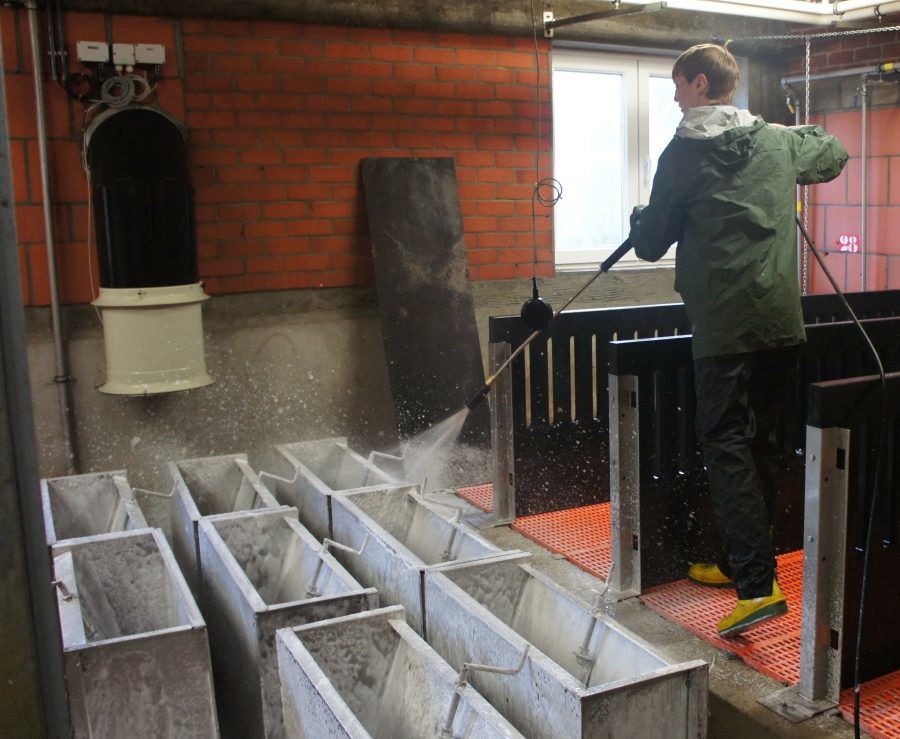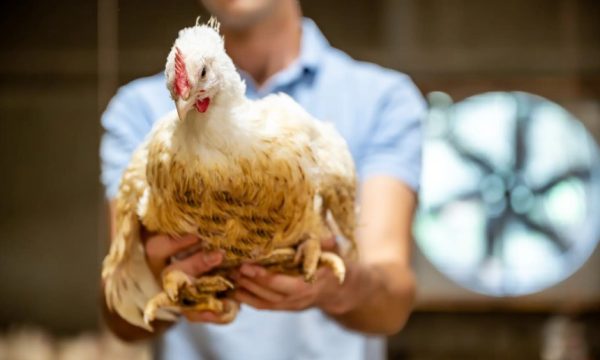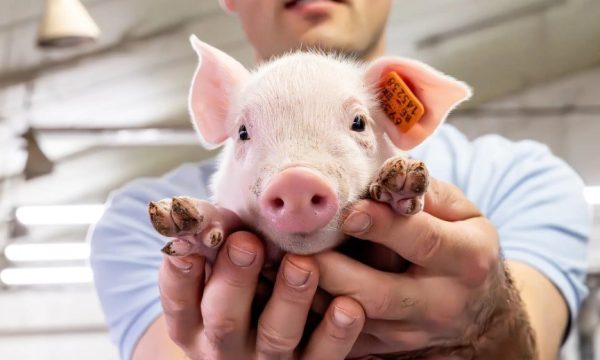Press release Disinfectants in the livestock shed do not cause resistant bacteria

In order to prevent and combat animal diseases, stables and their surroundings must be disinfected on a regular basis. However, there are indications - based on laboratory tests - that the use of disinfectants can lead to resistance in bacteria. This resistance would then not only build up against the disinfectants themselves, but also against antibiotics. This is not true, if you use the correct dose of the disinfectant,' ILVO-UGent researcher Helder Maertens has determined during her PhD research. Maertens carried out a large series of field experiments to determine the effective risk of the formation of resistance under practical conditions. No disinfectant resistance and no increased antibiotic resistance occurs by using disinfectants according to the prescribed application method and the recommended dosage by the manufacturer, it appears. However, the use of lower concentrations of disinfectant than prescribed does cause problems.
Increasing hygiene on Flemish livestock farms
Helder Maertens set to work with a wealth of data available at DGZ-Vlaanderen, the Flemish veterinarian association. She analyzed data from hygiograms (hygiene scores based on microbiological analyses), collected between 2007 and 2014 in the poultry sector. She looked for a link between the applied cleaning and disinfection protocol and the hygiene score determined afterwards.
Over the years, the average hygiene score decreased, indicating better hygiene.
Hygiene turned out to be better when using a cleaning product than when cleaning with water alone. When during disinfection two different disinfection products were used instead of one, scores improved. This was also the case when the disinfection was carried out by an external company, compared to disinfection by the farmer.
Sensitivity of E. coli bacteria collected in stables
Maertens conducted a survey of no fewer than 25 broiler farms and 21 pig farms on the applied cleaning and disinfection protocol. On each farm, 24 hours after disinfection, samples were taken from the barn environment (broiler house and piglet battery). This was done in order to collect E. coli bacteria on which the sensitivity to antibiotics and disinfectants could be tested. These tests showed that the bacteria collected in the poultry house did not show any resistance to the disinfectants. Furthermore, the researcher found no evidence of increased antibiotic resistance through the use of disinfectants.
Repeated exposure to commonly used disinfectants
In a subsequent trial, three commonly used disinfectants were used in several animal housing units (broiler house and piglet battery) during five consecutive rounds of production. Maertens studied the effects of the repeated use of these disinfectants on the sensitivity of bacteria to both disinfectants and antibiotics (i.e., did antimicrobial resistance develop?).
The E. coli bacteria did not show any differences in sensitivity depending on the choice of disinfectant. There was also no change in sensitivity with respect to the disinfection products depending on the time elapsed in the observation period. In other words, there is no build-up of disinfectant resistance with repeated use. There is also no development of antibiotic resistance.
Under-dosage of disinfection is not recommended
During two laboratory tests, Maertens studied the consequences of disinfection at a lower dosage than prescribed by the manufacturer. At this concentration, bacteria can survive, although there are also bacteria that get into an 'intermediate' state between life and death as a result.
Such bacteria, which have undergone a sub-optimal disinfection, appear to react less sensitively to an antibiotic treatment. It is not the case that bacteria under the influence of a suboptimal disinfection are able to transfer their antibiotic resistance genes to other bacteria.
Conclusion
There is now scientific clarity on the effect of the types of disinfectants used in the primary animal sector and their (non-existent) link with antimicrobial resistance. On the basis of these abundant results from field trials, the researcher can state that there is no reason to consider the use of antimicrobial resistance. On the basis of these abundant results from field trials, the investigator can state that there is no reason for concern about antimicrobial resistance selection through the use of disinfectants in animal husbandry, albeit under the important condition that the disinfectants are correctly applied.


